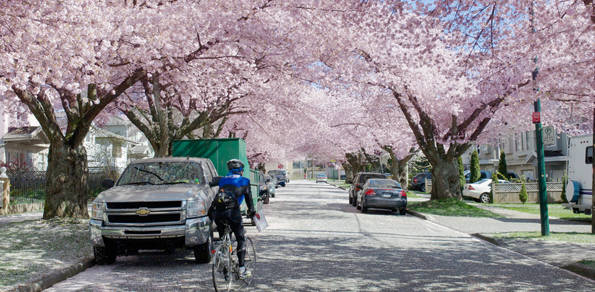“Strengthening Resilience: Opportunities for Local Governments & Communities” Webinar
Michelle Colussi of the Canadian Centre for Community Renewal offered a definition of this resilience lens:
"Resilience is our ability to respond and adapt to change in ways that are pro-active, that build local capacity and that ensure essential needs are met."
"While we do definitely want to see positive change occur on our most pressing problems, a long-term goal is to work to enhance the overall state of any system so that it has capacity to continually learn, adapt and transform present and future challenges." -Social Innovations Generation (SIG) Knowledge Hub, Waterloo University 2012

Resiliency In Practice; In Resilient Neighbourhoods
- The focus is on the whole community or neighbourhood
- There is a place-based focus and an interest in re-localization
- A quick fix is not offered; characteristics are developed and learned
- Work cuts across all sectors and interests with a common vision
There are roles for local governments, community organizations and neighbours/community members within this framework.
Local Governments work as a convener and supporter of existing networks within a community. They offer existing processes to map community assets, and resource/enable capacity building. They also create enabling policy tools such as grants and zoning opportunities.
Community Organizations build programming that is intergenerational and intercultural, facilitate neighbourhood communications, offer services to support marginalized people and foster their inclusion, provide leadership and can even coordinate alternative systems of exchange such as bartering or local currencies.
Neighbours and Community Members run street level activities, provide skilled labour and expertise, provide leadership and energy, offer purchasing power and get creative.
Resilient communities pay attention to the dimensions of resilience. Examples of each dimension are included below.
- Cultivating certain attitudes and values
- Projects that support community ownership of challenges and solutions such as Good Neighbour Awards and Neighbourhood Small Grants projects.
- Supporting neighbour-to-neighbour connections and sharing. For example, book boxes and parties with a purpose.
- Infrastructure and resources that meet essential needs
- In 2005, the Fernwood Neighbourhood Resource Group in Victoria purchased a derelict building and converted it to affordable housing, a café and retail space. It now offers an important gathering space to the community.
- Strengthening the local economy
- The T’Sou-ke First Nation has become an expert in installing solar panels for community members, offering a source of sustainable energy while creating local jobs.
- Leadership and community wide planning
- Capacity building of community members and leaders via training opportunities.
Steps for using the Resilience Tool:
- Create a multi-stakeholder group
- Access your community resilience: informal and formal
- Use the information for dialogue and learning
- Decision making and setting priorities
- Implement the strategy
- Measure your progress after 1 to 2 years and use the information for learning and adapting
Rob Wipond of Transition Victoria provided an overview of their community resiliency building project. This project has focused on growing a resilient neighbourhood, implementing economic changes at a local level and engaging neighbours. For more information please visit their website .
And remember: move towards partnership; focus on strengths; understand the complexities of the community you are working with; create space for community leadership; focus on strengthening resilience before a crisis, not just during or after and take risks :) .
Sarah Amyot from the Community Social Planning Council of Greater Victoria shared the following quote on the resilience model:
“The challenge is… how central government can redefine and transform its role to be supportive of public engagement. Resilience, according to both governments, is not meant to justify a new round of social programs, even if they have more of an outreach focus. Rather, community resilience involves a philosophical shift in relations between the state and civil society that changes the parameters of how local communities organize and act."
Visit BC Healthy Communities at: http://bchealthycommunities.ca
